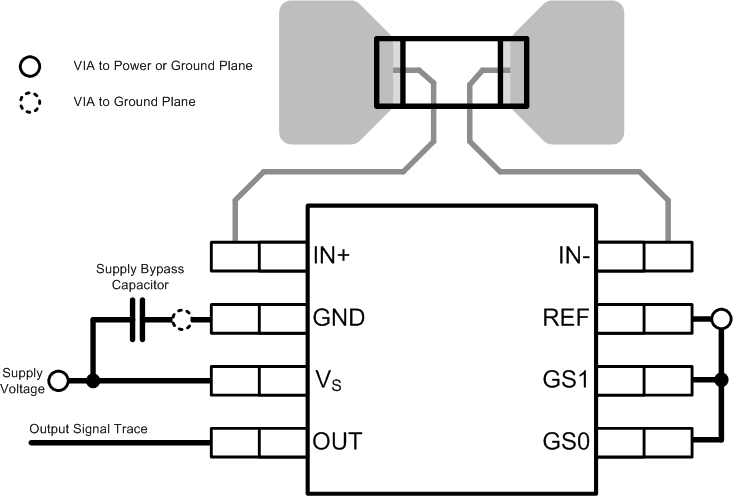SBOS612A February 2014 – March 2014 INA225
PRODUCTION DATA.
- 1 Features
- 2 Applications
- 3 Description
- 4 Revision History
- 5 Terminal Configuration and Functions
- 6 Specifications
- 7 Detailed Description
- 8 Applications and Implementation
- 9 Power Supply Recommendations
- 10Layout
- 11Device and Documentation Support
- 12Mechanical, Packaging, and Orderable Information
10 Layout
10.1 Layout Guidelines
- Connect the input terminals to the sensing resistor using a Kelvin or 4-wire connection. This connection technique ensures that only the current-sensing resistor impedance is detected between the input terminals. Poor routing of the current-sensing resistor commonly results in additional resistance present between the input terminals. Given the very low ohmic value of the current resistor, any additional high-current carrying impedance can cause significant measurement errors.
- The power-supply bypass capacitor should be placed as closely as possible to the supply and ground terminals. The recommended value of this bypass capacitor is 0.1 μF. Additional decoupling capacitance can be added to compensate for noisy or high-impedance power supplies.
10.2 Layout Example
 Figure 45. Recommended Layout
Figure 45. Recommended LayoutThe layout shown has REF connected to ground for unidirectional operation. Gain-select terminals (GS0 and GS1) are also connected to ground, indicating a 25-V/V gain setting.